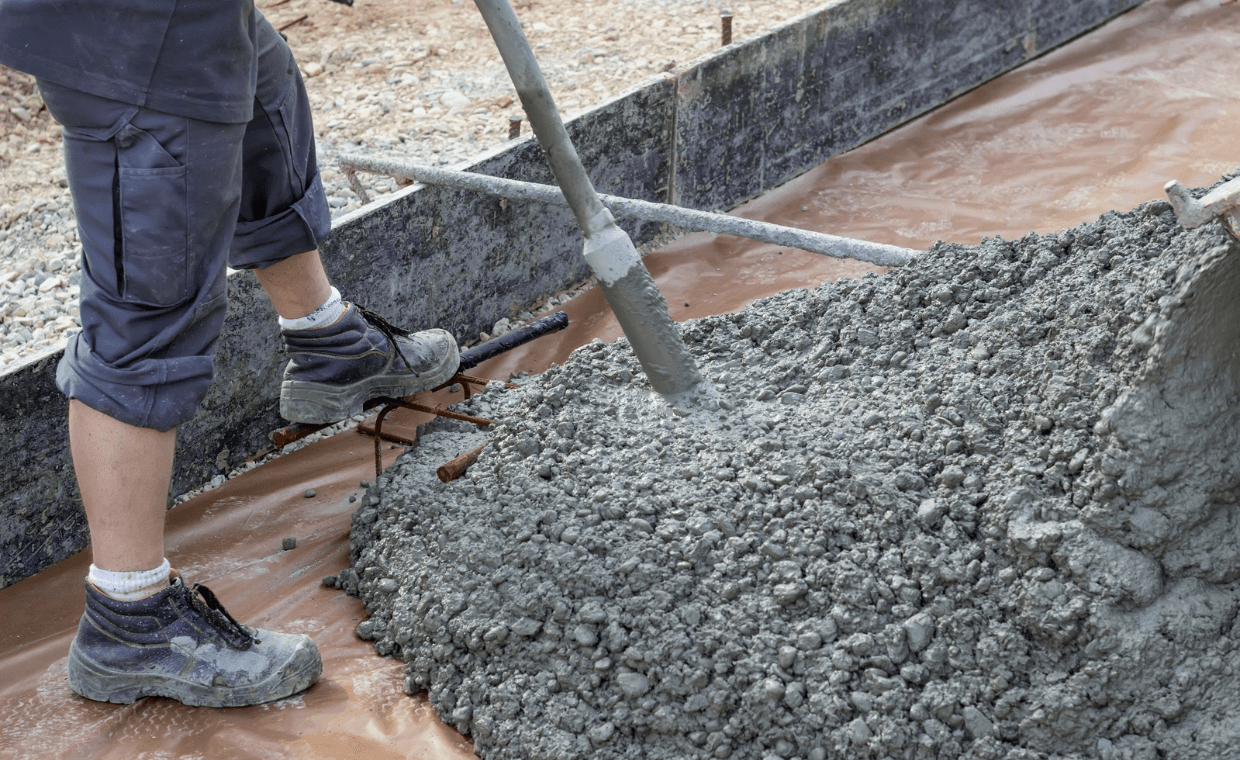
Concrete compaction is a vital site operation that allows fresh concrete to achieve its specified strength, density, and low permeability. It also has a direct impact on getting the desired surface finish.
To make your structure strong and long-lasting for its designed life, it must be non-porous or impermeable. Improper compaction during the placement of concrete can cause porous concrete, which leads to various problems like leakages, corrosion, etc. Gharpedia provides a comprehensive guide on the compaction of concrete, its importance, the process of compaction, and methods of concrete compaction.
What is Compaction of Concrete?

Theoretically, the compaction of concrete is the process adopted for expelling the entrapped air as far as possible from the fresh concrete to achieve the highest possible density of the compacted mass. It simply means discarding voids present in concrete.
The main purpose of the compaction of concrete is to get a dense mass without voids, to get the concrete to surround all reinforcement, and to fill all corners.
Why Compaction of Concrete is Necessary?
You now know that, air bubbles get trapped in the concrete during the process of mixing, transporting, and placing fresh concrete. Higher air bubbles lower the workability of the concrete.
Air bubbles occupy between 5 and 20 percent of the total concrete volume. The presence of these bubbles reduces the bond between the concrete and reinforcement and/or any other embedded parts, and the structure may lose its strength considerably.
Compaction improves the fluidity of concrete, and with the reduction of internal friction, the packing of coarse aggregates takes place. A well-compacted concrete is free from loose pockets and air bubbles.
Voids reduce the strength of concrete and make it permeable or porous, which increases the possibility of corrosion. Therefore, experts always follow good concrete-making practices that make the concrete durable. If you want to make durable concrete that contributes to the strength and durability of the structure, then 100 percent compaction of concrete is one of the most important aspects.
Process of Compaction of Concrete

The process of compaction of concrete involves two stages. In the first stage, the aggregate particles are moved so that the concrete fills the shape, resulting in a levelled surface. The second stage involves discharging the trapped air.
Understanding the two stages of the compaction process is essential, since vibration can hasten the initial consolidation of the concrete. The concrete liquefies and levels the surfaces, creating the illusion that it has been compacted. Entrapped air, however, takes longer to reach the surface. Compaction is a must until the surface is free of air bubbles.
When is Compaction of Concrete Complete?
Compaction is normally complete when air bubbles stop rising to the surface and the poker’s loudness ceases to change. A shiny layer of mortar on the surface is another indication that the compaction is complete.
Always vibrate a bit longer than you think is necessary, except for slabs and high-workability mixes, where there can be chances of over compaction.
When is Re-vibration of Concrete Required?

Re-vibration is possible as long as concrete is in plastic stage or can achieve plasticity again. The technique can reduce plastic cracking and air voids in the top 600 mm thickness of concrete, producing higher strength, better surface finish and enhanced durability. According to authors Adam M. Neville and J. J. Brooks (book “Concrete Technology”), re-vibration of concrete for one to two hours after placing increases the compressive strength of concrete by up to approximately 15%. The actual increase in strength will be different, depending on the workability of the concrete mix.
We have a detailed article on how to measure workability of concrete:
Pouring Perfection: Mastering the Concrete Slump Test for Quality Construction
Methods of Compaction of Concrete
Following are the different methods of compaction of concrete:
1. Manual Compaction (hand compaction) by
- Rodding
- Ramming
- Tamping

2. Mechanical Compaction by Vibration
- Internal vibrator (Needle vibrator)
- Formwork vibrator (External vibrator)

- Table vibrator
- Platform vibrator
- Surface vibrator (screed vibrator)
- Vibratory roller

3. Compaction by Pressure and Jolting

4. Compaction by Spinning

Conclusion
The primary objective of compaction of concrete is to remove air gaps that exist in freshly mixed concrete. Voids are extremely detrimental to the concrete element and have a negative impact on its durability. Concrete compaction improves concrete density, strength, bonding with reinforcement steel, decreases surface imperfections, and significantly increases the durability of reinforced concrete structures.
Interested in knowing more about methods of concrete compaction? Check out our detailed article:
Methods of Concrete Compaction and Types of Vibrators
Image Courtesy: Image 4, Image 5, Image 6, Image 7, Image 8, Image 9






























